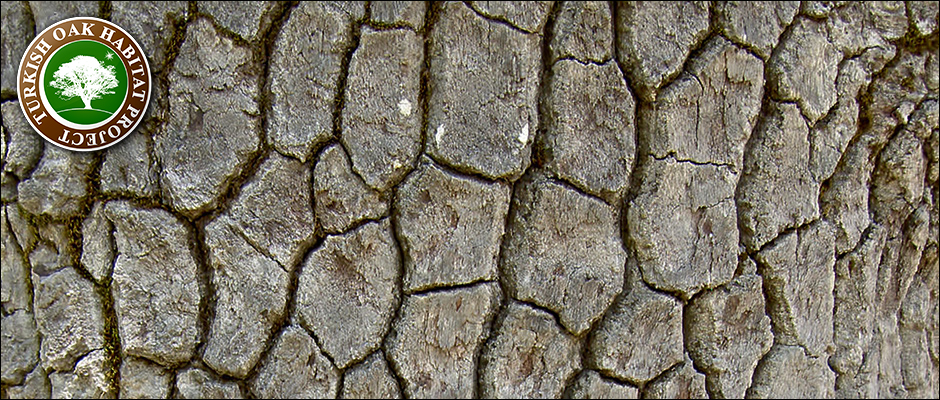10-16 July 2017…
Often when we visit the areas we are studying, the aim is to register trees, birds or insects and a with a scientiffic approach, but there are seldom time to use camera and make good photos. In 10-16 July 2017 Nicklas Jansson and Stanislav Snäll made a journey to the region arround the village Kösecobanli (Gülnar, Mersin, Turkey). The aim was to take pictures of the oak habitat, structures, insects and people living in the area.

The Oaks in this region are allways used by humans, at least until very resently. The people use the trees both for taking fire wood and taking the leaves as fodder for goats. This is a very old tradition and the same way of living that humans all over the world have lived many thousands of years. In the end of the summer when most vegatation on ground are too dry as fodder the young men in the families climb the trees with machete and cut down the twiggs with leaves for the hungry goats.


The people lives as nomads so they stay the winter at low altitude near the Mediterranean sea and spend the summer in this region at 1500m altitude. If they can they use the soft rocks that are carved since long ago to caves and rooms used both for humans and animals.



The trees gets a special shape from this treatment. They are short, with a dence crown and often hollow trunk and some thick branches with mainly young shoots. The activity of cutting the trees like this is called pollarding.



Between the villages Kösesobanli, Kuskan and Gezende there is a huge area (50km2 = 5000ha) with old pollarded oak trees. All the trees have been or are still released from twiggs every 3-5 years. A rough estimation of the number gives > 50 000 pollarded oaks in this area. This is something very unique and in Europe there is only in some smaller areas in Spain and Romania with something similar. In other parts of Europe there are often small fragments of this habitat and tradition left but most of the these old trees have been removed during the last century.

The trees are often very old but it is hard to estimate their age as the inner parts of the stems are missing. Similar trees in Sweden are calculated to be between 150-600 years old. The oaks in this region are often Quercus ithaburensis and Q. infectoria. Even if the trees are colonised by fungy and totaly hollow they are strong and healthy as the life of a tree stays in the last year rings of wood, the part of the sapwood where water and nutrients are transported.



The Oaks (Quercus spp) are very species rich and especially this kind of trees with many cavities, fungy, dead wood and bark. Inside the hollow trunks the larvae of many rare beetles are eating the roted wood and swimming in the wood mould in the bottom of the cavities. They are hidden but can be found as adults during short periods from May to September. Many are night active but some can be seen visiting flowers for nectar and pollen consumption on sunny days.


Its a challange to try finding the wood living insects on daytime, as they are hiding in the canopy or inside the hollow trunks. But as many night living insects are attracted to light a good method to find them is to arrange a lamp with white sheets to easier see them.

Some photos were taken during the night but many insects were kept until morning with better light condition for photo.

We found five members of the family Lucanidae or stag beetles. 1st: Lucanus cervus, 2nd: Lucanus ibericus and 3rd: Lucanus (Pseudolucanus) busignyi. These three species have their larval development on the roots of dead oaks. The first mentioned is more than 10cm long and the mandibles are used by the males for fighting to win the females.



Two other Lucanids from the genus Dorcus. 1st and 2nd is D. peyronii and 3rd is D. parallelipipedus. Both species have their larval development in dead wood in stumps and logs from Oaks.



Three Scarabids or flover shafers. Protaetia speciosa, P. mirifica and Protaetia sp. They have their larval development inside hollow trunks of old trees, preferly oaks in this area.



Other beetles living inside the hollow oaks in the area is the two Scarabids Propomacrus bimucronatus (1st) and Oryctes nasicornis (2nd) and the darkling beetles (Tenebrionidae) Tenebrio obscurus (3rd).



We also found some of the larger species from the family Cerambycidae or longhorn beetles – 1st: The great capricorn Cerambyx cerdo, 2nd: Cerambyx welensii, 3rd: Prionus besikanus. The larvae of these species eat the dead wood of dead or dying oaks.



Other insects visiting the lamps were moths of different species. Often their larvae eats the leaves of the oaks and the adults are flying in the dark night. Identification is only preliminary – 1st: Bena bicolorana, 2nd: Marumba querceus, 3rd: Catocala conversa



Most of the trees are too old and full with rutten wood or hollow to be good timber trees and the wood can only be used for heating. Sadly, the last years the forest authorities have start to cut many of the old oaks and remove the trunks from the area.



The aim with the felling of the old trees is to give space for planting cedar trees. If the old trees are left the damage on the biological diversity can be reduced. As long as the old oaks have some space and not are killed from compeeting trees they can work as valuble habitat for the unique fauna in the area.














